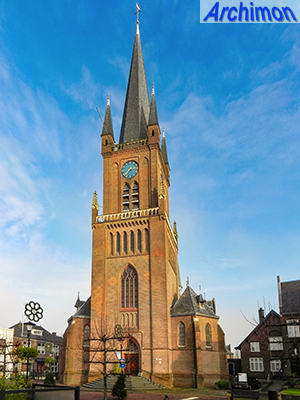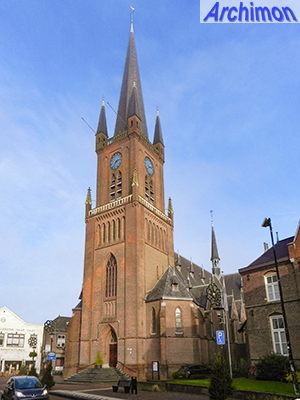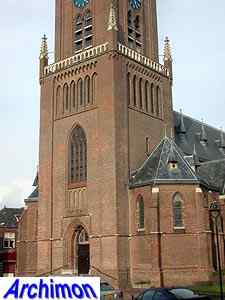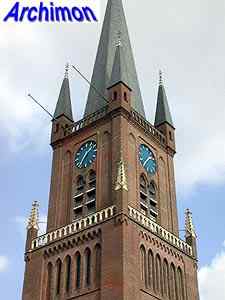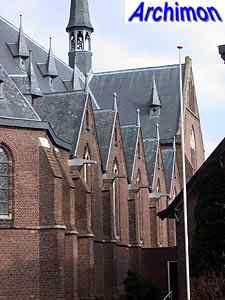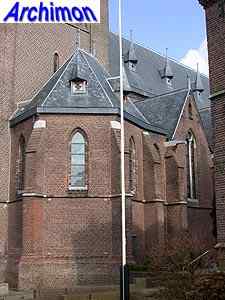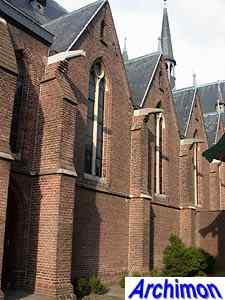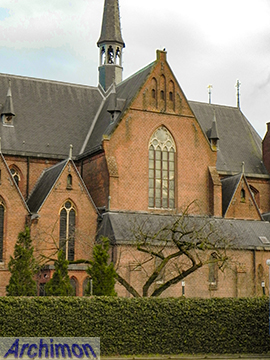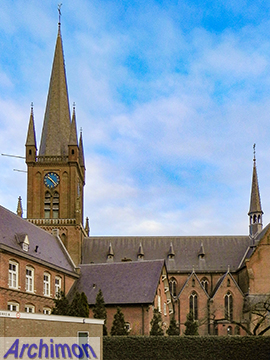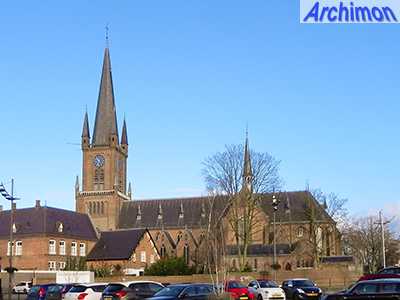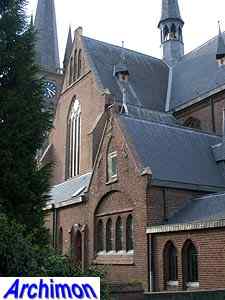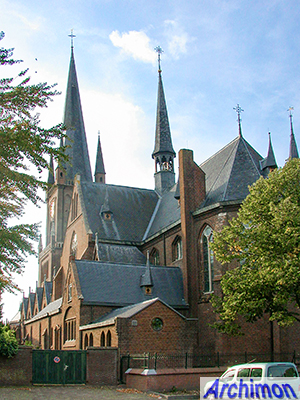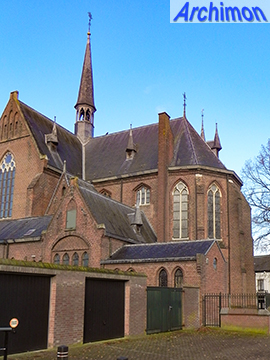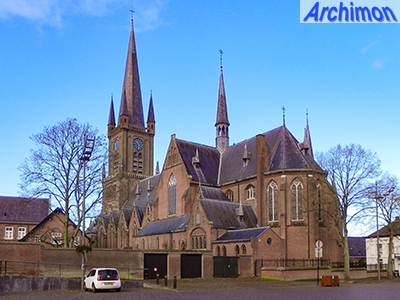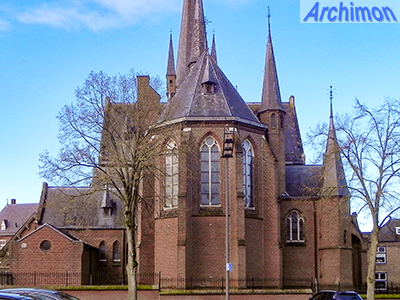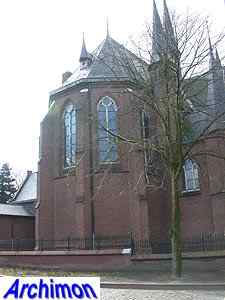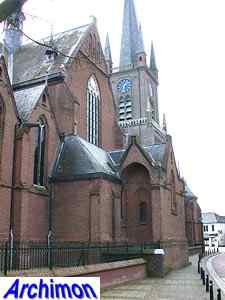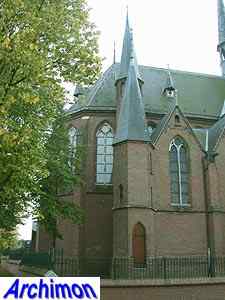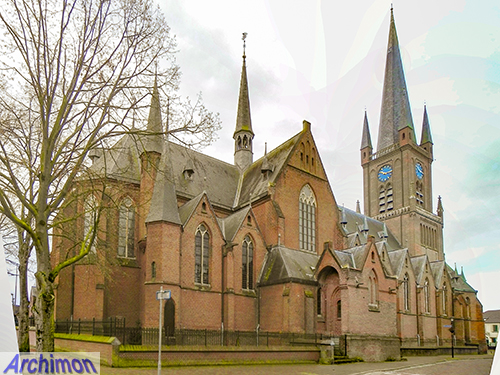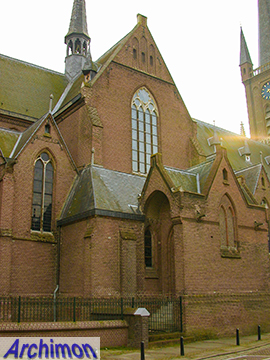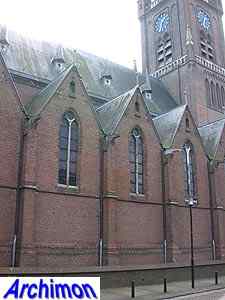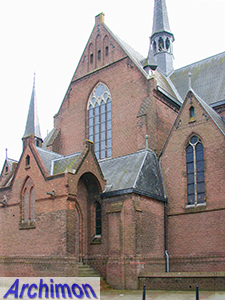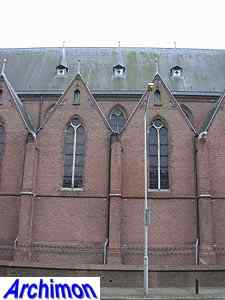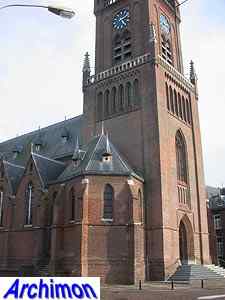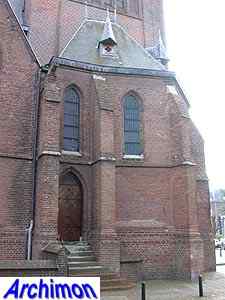
Druten (G): H. Ewalden (P.J.H. Cuypers, 1874-1877)
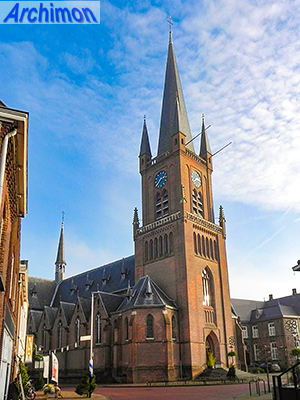 In
ca. 1250 a small Romanesque church was built in Druten, named after a
group of missionaries that travelled through the Netherlands in ca.
693. Although the church was closed by the protestants
in 1609, only to appoint a reverent in 1615, Druten continued to be a mainly catholic village, with a barn
church on the border with the nearby village Puiflijk. But in February 1795,
after a French invasion had lead to the Batavian Republic and freedom of
religion was proclaimed, the catholics temporarily occupied the old church, then
used a house in the heart of the village as a church until in 1800 their claim
to te old church was finally rewarded. But it didn't last long.
In
ca. 1250 a small Romanesque church was built in Druten, named after a
group of missionaries that travelled through the Netherlands in ca.
693. Although the church was closed by the protestants
in 1609, only to appoint a reverent in 1615, Druten continued to be a mainly catholic village, with a barn
church on the border with the nearby village Puiflijk. But in February 1795,
after a French invasion had lead to the Batavian Republic and freedom of
religion was proclaimed, the catholics temporarily occupied the old church, then
used a house in the heart of the village as a church until in 1800 their claim
to te old church was finally rewarded. But it didn't last long.
As the parish grew steadily, the old church became too small. In 1822 it was demolished and replaced by a new church, although the old tower, as property of the municipality, was preserved until in 1877 it was demolished along with the church to make space for yet another church.
In 1874 architect P.J.H. Cuypers was invited to make the plans for an even bigger church, the current neo-Gothic three-aisled cruciform basilica. Disagreements about finances between the church board and the architect stalled the beginning of the construction for several months, although in the meantime Cuypers' overseer already had arrived in the village, the old presbytery had largely been demolished and the trenches for the foundations of the new church had been dug. With the intervention of the bishop the matter was eventually settled.
Because Cuypers was not the cheapest of architects and because the church was going to be big, in order to finance the construction of the church and to save money, in 1875 a brick-oven was founded by the parish. By early 1876 enough bricks had been made to lay the foundations. Villagers carried the stones to the construction site. When the church was finished a new presbytery was built on the site of the old church. The brick-factory was sold off and continued as a commercial enterprise, also providing glazed bricks in various shapes and colours to several of Cuypers' later works.
The main tower, which is in a rather decorative neo-Gothic style, is two segments tall, with small ornamentive turrets on the upper corners of each segment, with balustrades between them, resulting in a silhouet that is meant to represents a vision of Jerusalem. The current spire is a simplified post-war replacement of the original one.
Next to the tower is a polygonal baptistry, with another chapel on the other side. The choir has a apse of five sides and is flanked by lateral choirs. Each trave of the side-aisles has a gable as well as a roof of its own, a typical feature of Cuypers' second period, in which he found inspiration from medieval churches in his own country, rather than in France or Germany. In this case the church of Princenhage was the source of inspiration, which was restored by Cuypers in 1873. Like at that church, at the H.H. Ewalden the centre between the gables of the side-aisles marks the position of the windows in the clerestory.
